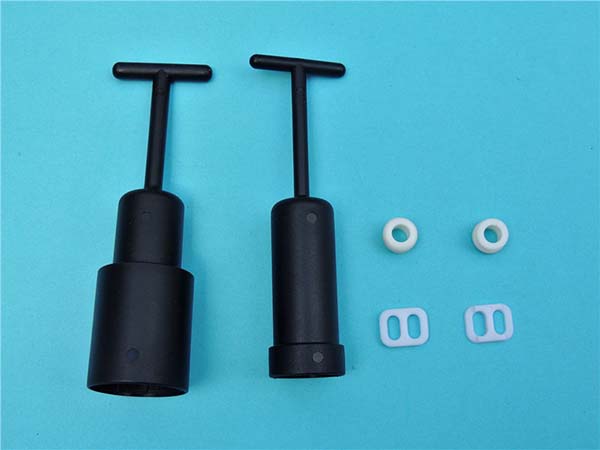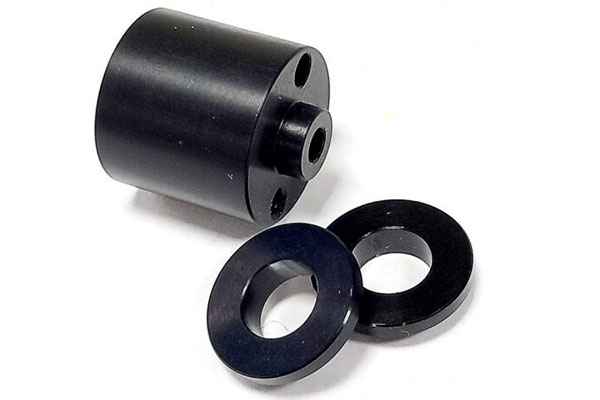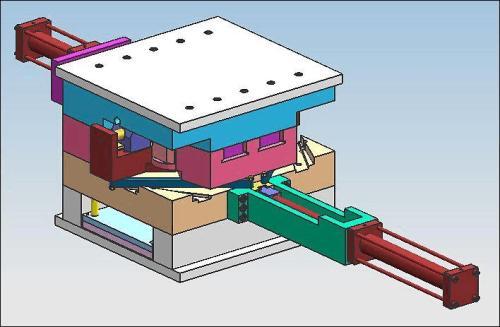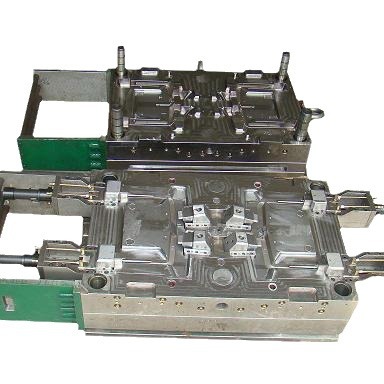Introduction
In the automotive industry, automobile parts molds play a crucial role. They are the key tools for manufacturing various components of a vehicle, from the smallest interior trims to large exterior body panels. The quality and precision of these molds directly impact the quality, performance, and production efficiency of automotive parts.
Engineering plastics have become increasingly important in the production of automobile parts molds. Compared to traditional metal materials, engineering plastics offer a range of advantages, such as high strength - to - weight ratio, excellent corrosion resistance, good electrical insulation properties, and design flexibility. They can also significantly reduce the weight of automotive parts, which is crucial for improving fuel efficiency and reducing emissions, a key trend in the modern automotive industry.
In this article, we will explore the common engineering plastics used for automobile parts molds. By understanding these materials, manufacturers can make more informed decisions when choosing the right plastic for their specific mold - making needs, considering factors like part functionality, production cost, and environmental impact.
Polypropylene (PP)
Properties
Polypropylene (PP) is a widely used engineering plastic in the automotive industry. It has a relatively low density, typically around 0.9 - 0.91 g/cm³, which is significantly lighter than many metals. This low - density property makes it an attractive choice for applications where weight reduction is crucial, such as in modern fuel - efficient automobiles.
In terms of chemical resistance, PP is highly resistant to a variety of chemicals. It can withstand exposure to acids, alkalis, and many organic solvents without significant degradation. This makes it suitable for use in environments where it may come into contact with automotive fluids like engine oil, coolant, and fuel additives.
PP also exhibits good mechanical properties. It has a relatively high tensile strength, usually in the range of 30 - 40 MPa, which allows it to maintain its shape and integrity under moderate mechanical stress. Additionally, it has a good flexural modulus, providing stiffness to the parts made from it. This stiffness is important for components that need to maintain their structural integrity, such as dashboard parts and some exterior components. However, its impact resistance at low temperatures is relatively poor compared to some other engineering plastics. But through modification techniques, such as blending with elastomers, its impact resistance can be significantly improved.
Polyethylene (PE)
Types and Properties
Polyethylene (PE) is another widely - used engineering plastic in the automobile parts mold manufacturing. It comes in different types, mainly High - Density Polyethylene (HDPE), Low - Density Polyethylene (LDPE), and Linear Low - Density Polyethylene (LLDPE), each with distinct properties.
HDPE has a relatively high density, typically in the range of 0.941 - 0.965 g/cm³. It is known for its high stiffness and strength. HDPE has a high tensile strength, usually around 20 - 38 MPa, which allows it to withstand significant mechanical stress. It also has good chemical resistance, being able to resist a wide range of chemicals, including many acids, alkalis, and solvents. This makes it suitable for applications where chemical stability is crucial. Additionally, HDPE has excellent wear - resistance, which is beneficial for parts that are subject to friction during operation.
LDPE, on the other hand, has a lower density, approximately 0.910 - 0.940 g/cm³. It is more flexible and transparent compared to HDPE. LDPE has a lower melting point, around 105 - 115°C, which makes it easier to process. Its elongation at break is relatively high, meaning it can stretch significantly before breaking. This flexibility makes LDPE suitable for applications where a certain degree of pliability is required.
LLDPE combines some of the advantages of HDPE and LDPE. It has a density similar to LDPE but offers better mechanical properties, such as higher tensile strength and improved resistance to environmental stress cracking compared to LDPE. LLDPE's structure gives it a more uniform distribution of short - chain branches, which contributes to its enhanced performance.
Acrylonitrile Butadiene Styrene (ABS)
Composition and Characteristics
ABS is a terpolymer composed of acrylonitrile, butadiene, and styrene. Each component contributes unique properties to the material. Acrylonitrile provides chemical resistance and heat resistance, enhancing the material's ability to withstand various environmental factors. Butadiene is responsible for the high impact - resistance of ABS. It allows the material to absorb a significant amount of energy during impact, making it less likely to crack or break. Styrene, on the other hand, contributes to the good processing properties and surface gloss of ABS.
The result is a plastic with excellent 综合性能. ABS has a relatively high hardness, with a Rockwell hardness typically in the range of R100 - R120, which provides good wear - resistance and scratch - resistance. Its impact strength is also remarkable, usually between 15 - 50 kJ/m² (Izod impact strength), depending on the specific formulation. This high impact - resistance makes it suitable for applications where the parts may be subject to mechanical stress or accidental impacts. ABS also exhibits good 尺寸稳定性,with a low coefficient of linear expansion, generally around 6 - 10×10⁻⁵/°C. This property ensures that the parts made from ABS maintain their shape and dimensions even under temperature variations, which is crucial for automotive applications where the parts need to fit precisely together.
Automotive Applications
- Instrument Panels: ABS is widely used in the manufacturing of instrument panels in automobiles. The high - gloss surface provided by the styrene component gives the instrument panel an aesthetically pleasing appearance. Its good impact - resistance is also important as the instrument panel is located in the front of the vehicle and may be subject to potential impacts in the event of a collision. Additionally, ABS can be easily molded into complex shapes, allowing for the integration of various features such as gauge clusters, air vents, and control panels.
- Grilles: The automotive grille, which is located at the front of the vehicle, is often made from ABS. The material's chemical resistance helps it withstand exposure to road debris, water, and various chemicals present in the environment, such as road salt in winter. The high - impact strength ensures that the grille can endure minor collisions or impacts from stones on the road without getting severely damaged. Moreover, the design flexibility of ABS allows for the creation of different grille patterns to meet the aesthetic requirements of different vehicle models.
- Interior Trim Parts: Many interior trim parts, such as door panels, center console components, and armrests, are made from ABS. Its good processing properties enable manufacturers to produce parts with fine details and smooth surfaces. The material's relatively low cost also makes it an economical choice for large - scale production of these interior components. Additionally, ABS can be easily colored or textured to match the overall interior design theme of the vehicle, providing a high - quality look and feel.
Polycarbonate (PC)
Physical and Chemical Properties
Polycarbonate (PC) is a high - performance engineering plastic with remarkable physical and chemical properties. It is known for its high strength and impact resistance. PC has a tensile strength typically in the range of 60 - 70 MPa, which allows it to withstand significant mechanical stress without breaking. Its impact strength is also outstanding, with an Izod impact strength often above 50 kJ/m², making it highly suitable for applications where parts may be subject to sudden impacts.
PC is highly transparent, with a light transmittance of up to 87% - 91%. This transparency, combined with its good mechanical properties, makes it an ideal material for applications where both optical clarity and durability are required.
In terms of heat resistance, PC has a high glass - transition temperature, usually around 145 - 150 °C, and a heat - distortion temperature of 130 - 140 °C under a certain load. This enables parts made of PC to maintain their shape and performance even at relatively high temperatures, which is crucial in automotive applications where the engine and other components generate heat.
PC also exhibits excellent dimensional stability. It has a low coefficient of linear expansion, approximately 6 - 7×10⁻⁵/°C. This means that parts made from PC will not expand or contract significantly with temperature changes, ensuring a tight fit and reliable performance in automotive assemblies.
Chemically, PC is relatively stable. It is resistant to many common chemicals, including water, weak acids, and alkalis. However, it is soluble in some organic solvents such as chloroform and methylene chloride.
Nylon (Polyamide, PA)
Features
Nylon, also known as polyamide (PA), is a remarkable engineering plastic with a wide range of outstanding features. Firstly, it exhibits excellent wear - resistance. The molecular structure of nylon endows it with the ability to withstand friction over long - term use. For example, in mechanical parts that are constantly in contact and moving against each other, nylon can maintain its integrity and performance much better than many other materials, reducing the need for frequent replacements.
Secondly, nylon has self - lubricating properties. This means that it can reduce friction between moving parts without the need for additional lubricants in many cases. This not only simplifies the maintenance process but also improves the efficiency of mechanical systems. For instance, in some small - scale mechanical components within an automobile, the self - lubricating property of nylon helps to ensure smooth operation and reduces energy consumption due to friction.
In terms of strength, nylon has high tensile and compressive strength. Its tensile strength can range from 50 - 100 MPa depending on the specific type and formulation. This high strength allows it to be used in parts that need to bear significant mechanical loads, such as engine components and structural parts in automobiles.
Nylon also shows good chemical resistance. It can resist the corrosion of many common chemicals, including some automotive fluids like engine oil, fuel, and various cleaning agents. This chemical stability ensures the durability of nylon - made parts in the complex chemical environment of an automobile.
Moreover, nylon has a relatively high melting point, usually around 215 - 260 °C, which enables it to maintain its shape and performance under high - temperature conditions, especially in the engine compartment where temperatures can be quite high.
Comparison Table
Here is a comparison table summarizing the key properties of the above - mentioned engineering plastics:
| Engineering Plastic | Density (g/cm³) | Tensile Strength (MPa) | Bending Modulus (GPa) | Heat Deflection Temperature (°C) | Impact Resistance |
| Polypropylene (PP) | 0.9 - 0.91 | 30 - 40 | 1 - 1.5 | 100 - 110 (at 0.45MPa) | Poor at low temperatures, can be improved by modification |
| High - Density Polyethylene (HDPE) | 0.941 - 0.965 | 20 - 38 | 1 - 1.5 | 60 - 80 (at 0.45MPa) | Good |
| Low - Density Polyethylene (LDPE) | 0.910 - 0.940 | 7 - 15 | 0.1 - 0.3 | 40 - 50 (at 0.45MPa) | Excellent flexibility, good impact resistance |
| Linear Low - Density Polyethylene (LLDPE) | 0.915 - 0.940 | 15 - 30 | 0.2 - 0.5 | 50 - 70 (at 0.45MPa) | Good, better than LDPE in some aspects |
| Acrylonitrile Butadiene Styrene (ABS) | 1.04 - 1.06 | 25 - 60 | 2 - 4 | 80 - 105 (at 0.45MPa) | High, usually 15 - 50 kJ/m² (Izod impact strength) |
| Polycarbonate (PC) | 1.2 | 60 - 70 | 2 - 2.4 | 130 - 140 (at 1.82MPa) | Outstanding, Izod impact strength often above 50 kJ/m² |
| Nylon (Polyamide, PA) | 1.13 - 1.15 | 50 - 100 | 2 - 3 | 180 - 220 (for some types, at 1.82MPa) | Good, self - lubricating and wear - resistant |
This table provides a quick overview of the differences in these materials' properties, which can help engineers and manufacturers make more informed decisions when choosing the right engineering plastic for their automobile parts molds. For example, if weight reduction is a top priority and the part does not require extremely high strength, PP or PE might be good choices due to their low density. On the other hand, if high impact - resistance and dimensional stability are crucial, PC or ABS could be more suitable.
Yigu Technology's Perspective
As a non - standard plastic metal products custom Supplier, Yigu Technology deeply understands the significance of choosing the right engineering plastics for automobile parts molds. Our rich experience in custom - manufacturing plastic products allows us to offer unique insights.
When it comes to material selection, we take into account the specific requirements of each automotive part. For instance, for parts that need to withstand high - temperature environments like engine - related components, we often recommend nylon due to its high - temperature resistance and excellent mechanical properties. If the focus is on cost - effective solutions for large - scale production of interior components, polypropylene might be a more suitable choice considering its relatively low cost and good moldability.
Our expertise also lies in custom - tailoring plastic products according to different mold designs. We have a professional R & D team that can optimize the formulation of engineering plastics to achieve the best balance of properties, such as enhancing the impact resistance of PP - based materials for bumper production. This customization ability enables us to meet the diverse needs of the automotive industry and provide high - quality, reliable solutions for automobile parts molds.






